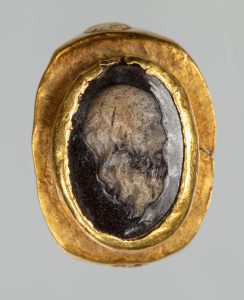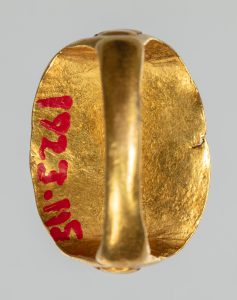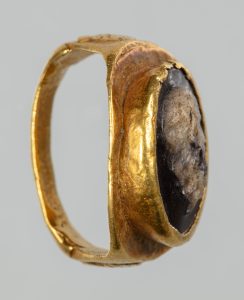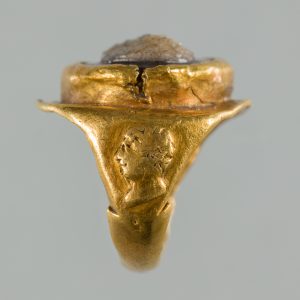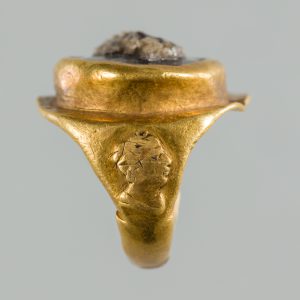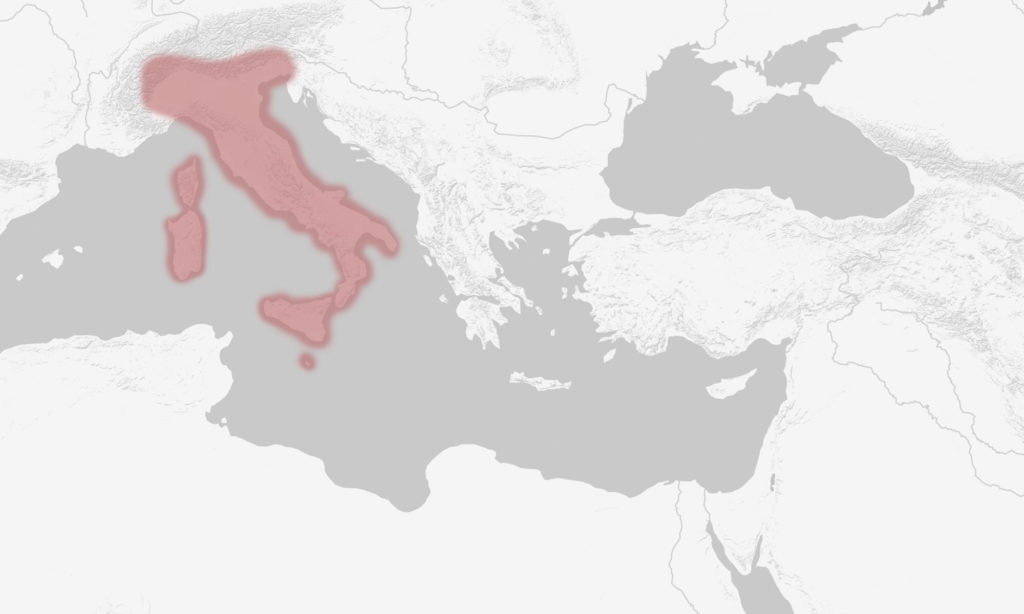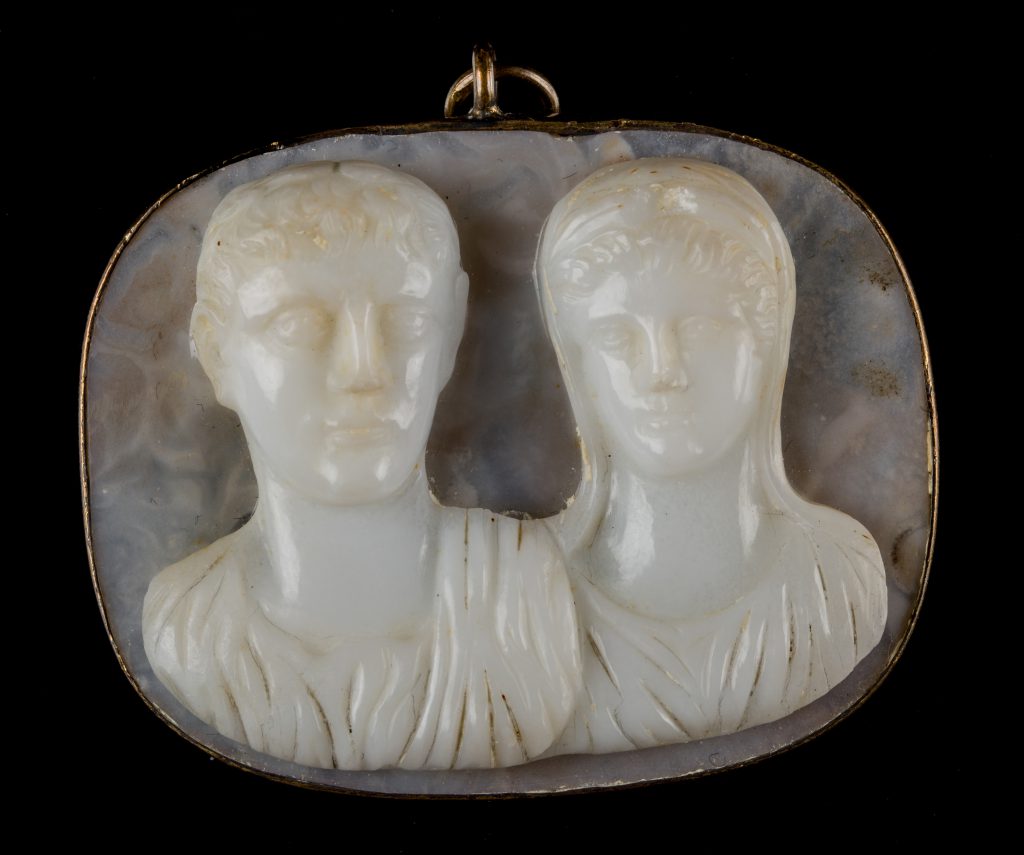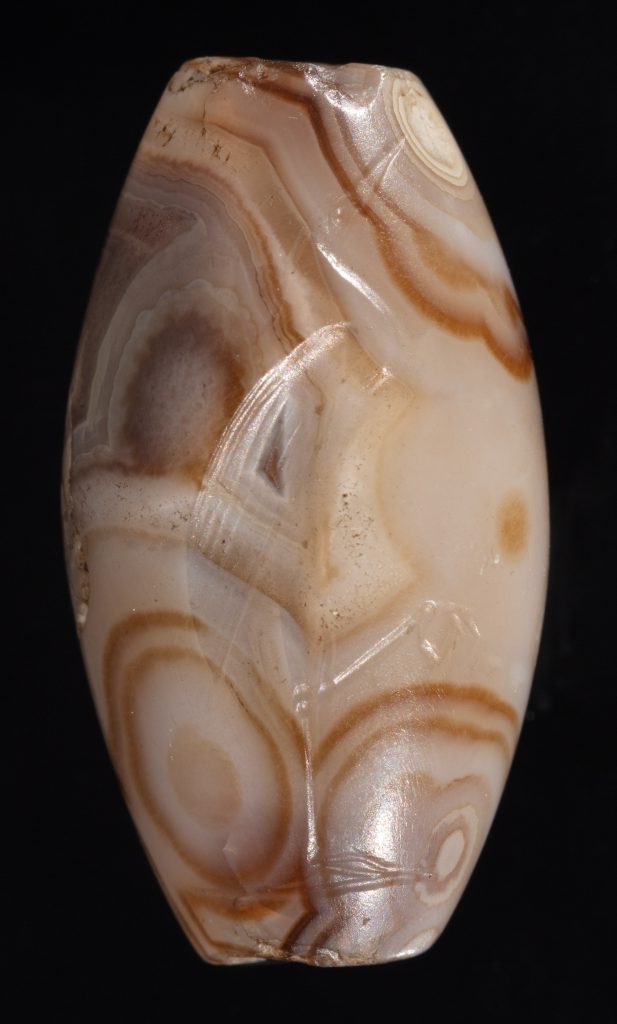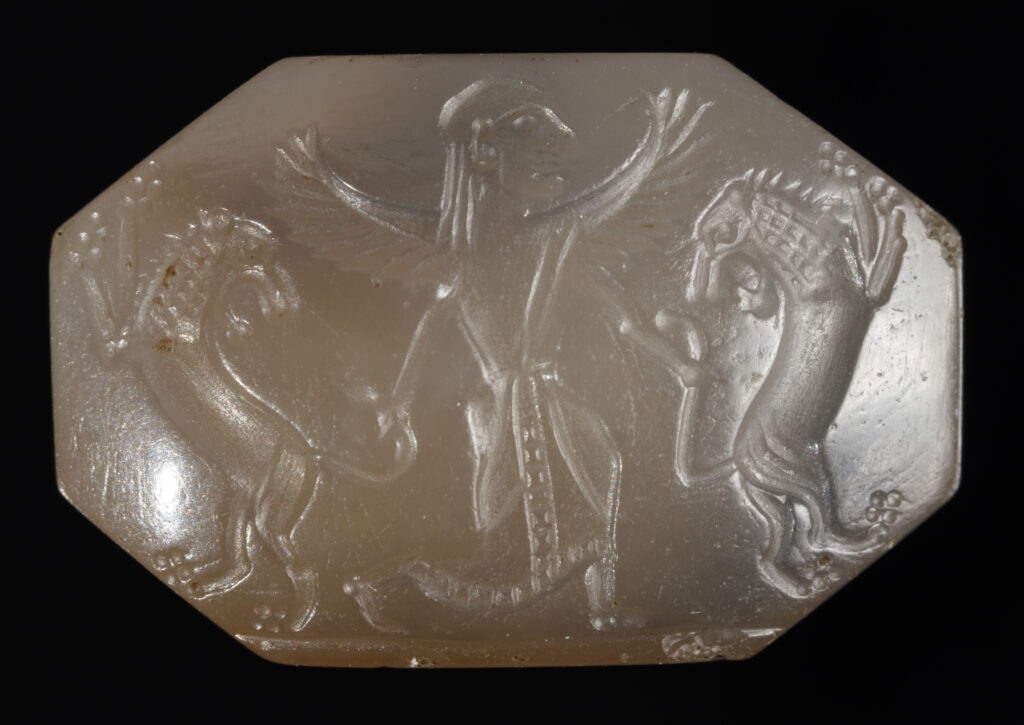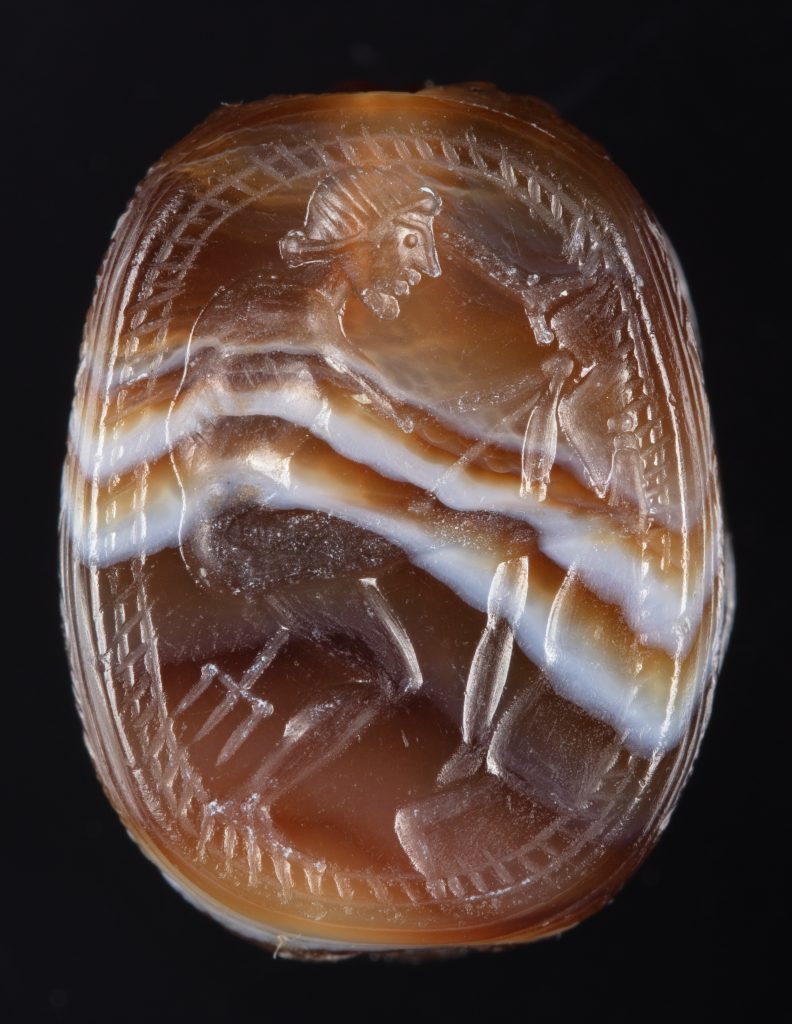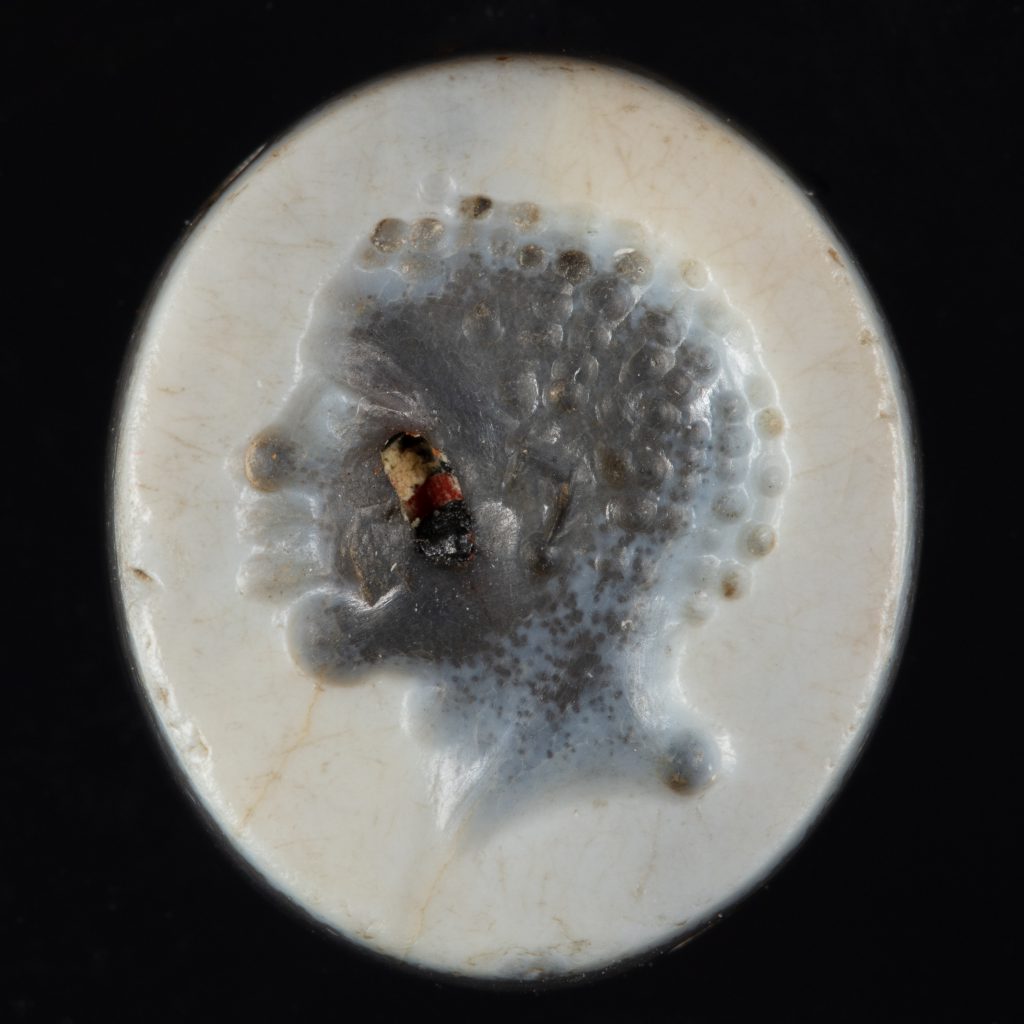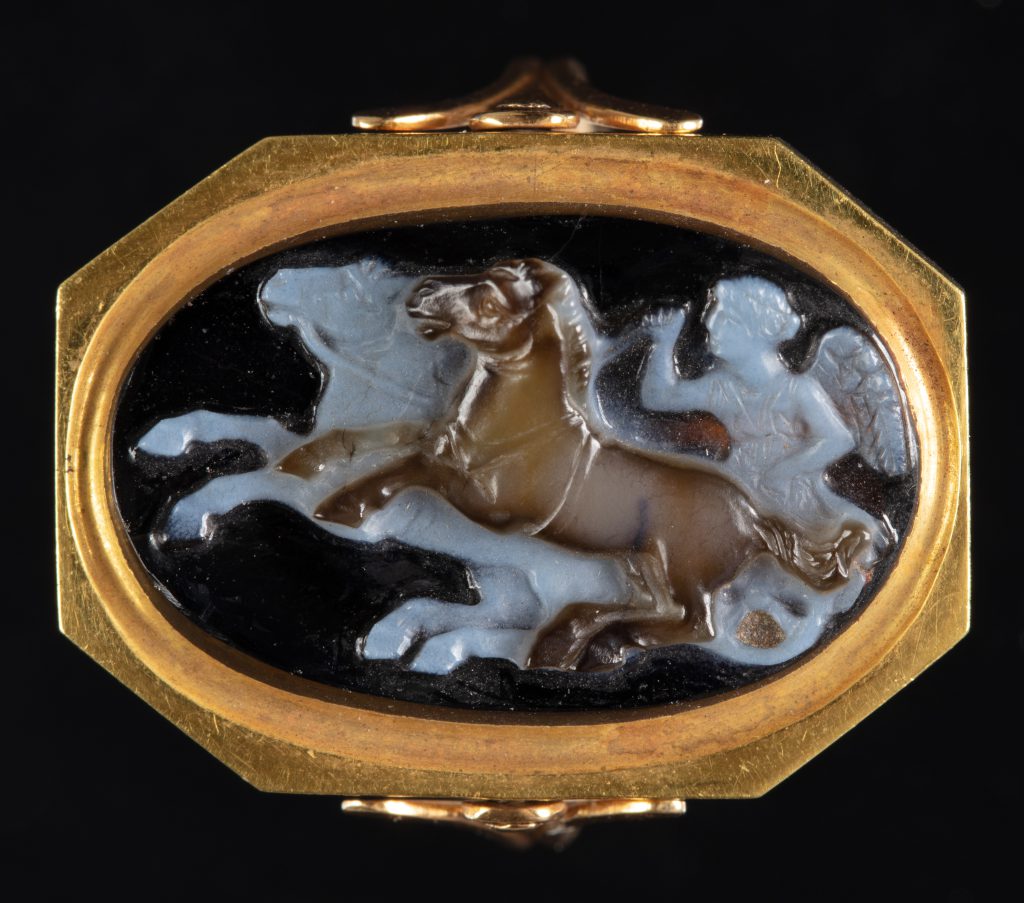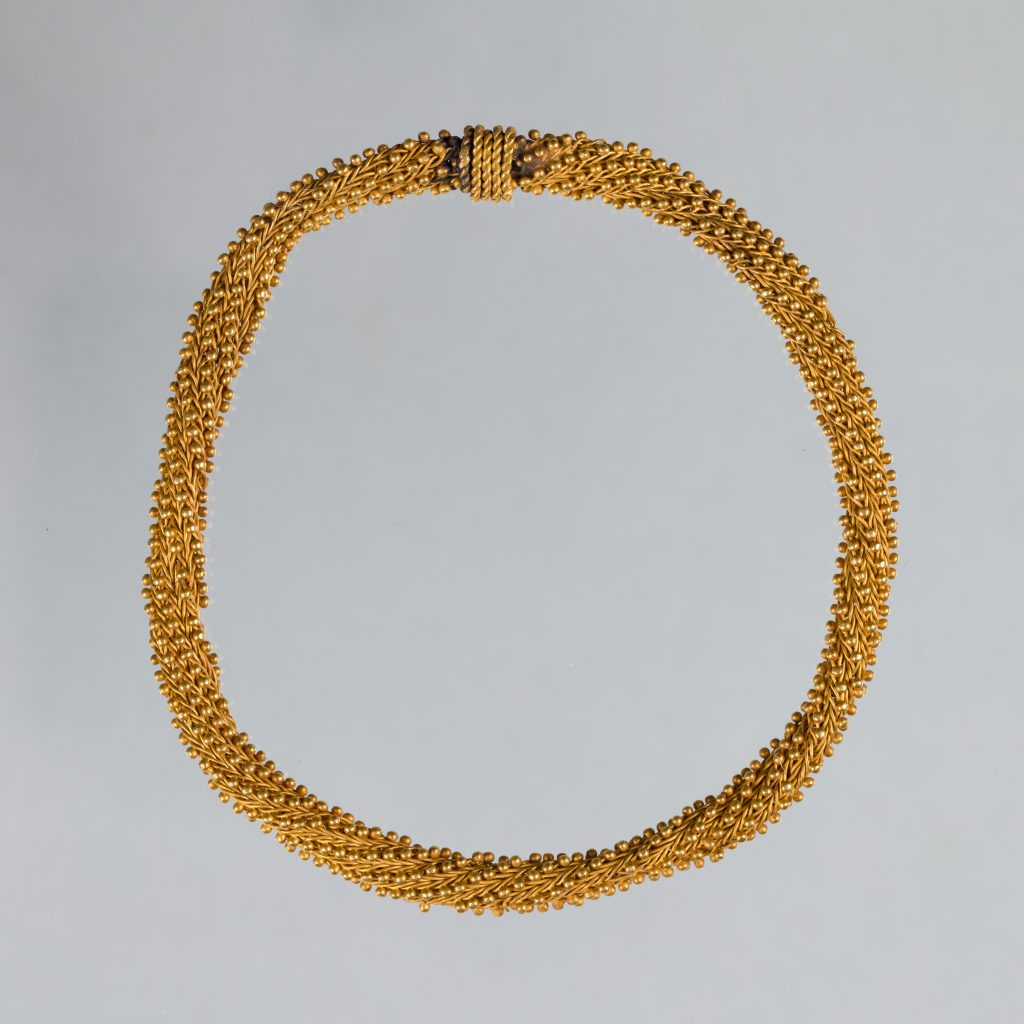

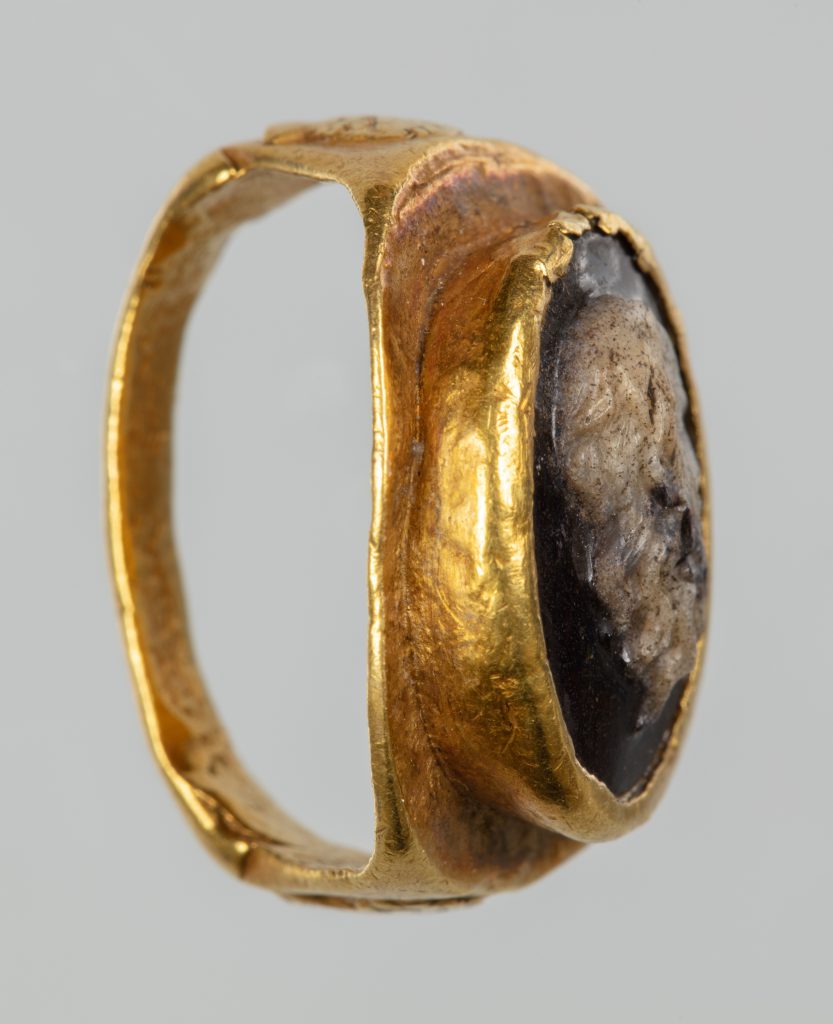
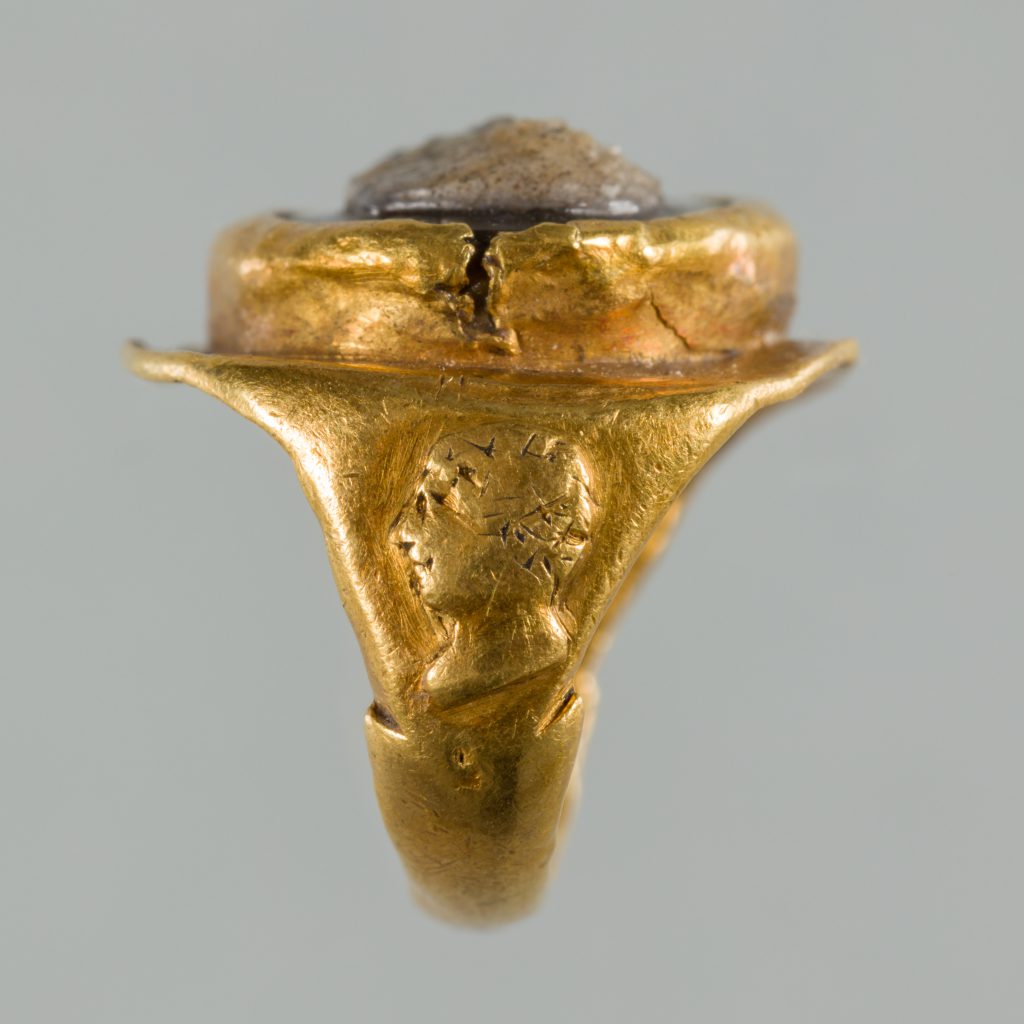
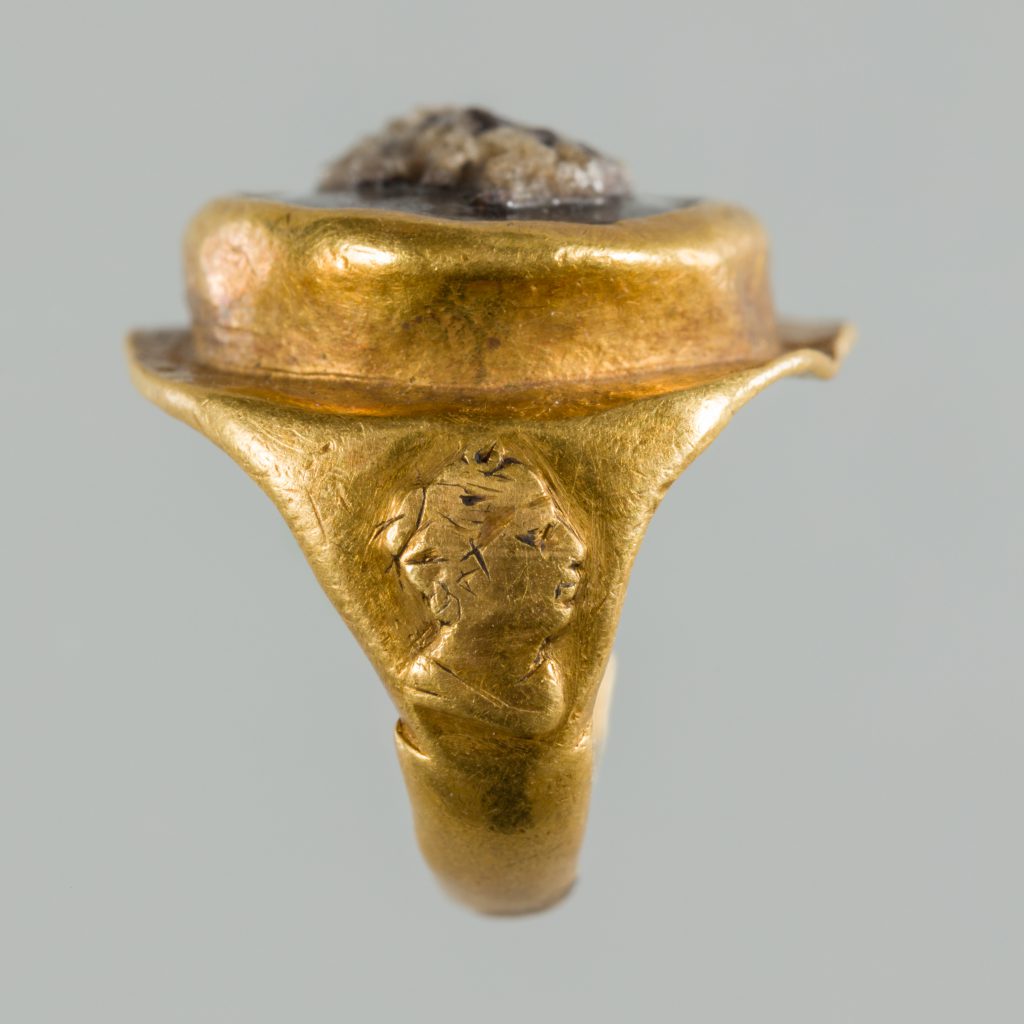
Gift of Edward Perry Warren, Esq., Honorary Degree 1926
1923.115While many gemstones carved in antiquity have been refashioned and set into more contemporary jewelry settings, or removed from their original contexts altogether, this object is one of the few that has not been altered. The ancient gold setting holds a cameo depicting Silenus, an older satyr, or half-man, half-goat creature who was a follower of the god Dionysus. On either side of the cameo a pair of portraits has been carved in relief in the gold band. On one side is the bust of a woman, on the other is that of a man, possibly representing a husband and wife.
Silenus was a popular mythological figure from the ancient Mediterranean world who was portrayed in a variety of media. One such example exists within Edward Perry Warren’s donations: a bronze mask of Silenus, which was likely a decorative ornament perhaps originally attached to furniture. Silenus was the eldest of the satyrs, oft-inebriated followers of Dionysus, god of wine and theatre. Although satyrs are half-man, half-goat creatures, Silenus is often illustrated with more horse-like features, which more adequately describe the pointed ear that is somewhat difficult to discern from his thick, flowing hair and beard.
Warren’s educational objective to provide students with “specimens at hand” ultimately inspired individuals studying at Bowdoin as well as those pursuing their degree elsewhere. This ring was featured in an exhibition catalogue, Gold Jewelry: Craft, Style and Meaning from Mycenae to Constantinopolis, which presented the work of graduate students at Brown University and the Catholic University at Louvain-la-Neuve. Thus, Warren’s donations served both the Bowdoin and Brunswick communities as well as those across the country, including other educational institutions.
Before 1923, collection of Edward Perry Warren; 1923, gifted to the Bowdoin College Museum of Art by Edward Perry Warren.
Collector
A testament to his impact as an influential twentieth-century American antiquities collector, Edward Perry Warren’s (1860–1928, H ’26) name is linked to hundreds of ancient objects housed in institutions across the United States, including more than five hundred works at the Bowdoin College Museum of Art alone.
